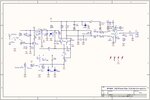neazoi
Advanced Member level 6
Hello I have found this circuit
https://www.qsl.net/7n3wvm/regen.html
1. Is it really a regenerative circuit?
2. How is feedback to the fet applied, since there is no tap on the coil?
https://www.qsl.net/7n3wvm/regen.html
1. Is it really a regenerative circuit?
2. How is feedback to the fet applied, since there is no tap on the coil?
